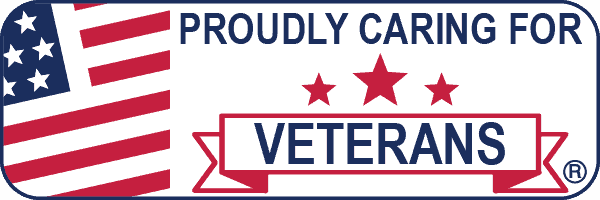Have you heard of vibroacoustic therapy?
If you haven’t, you are not alone. A type of holistic therapy, vibroacoustic therapy is often used in conjunction with traditional therapies for those recovering from substance addiction.
What is Vibroacoustic Therapy?
Vibroacoustic therapy, also known as VAT, is a type of sound healing that uses vibrations of pure tones, also called pulsed frequency sine waves. In some instances, the pure tone vibrations are combined with vibrations of specifically chosen relaxing music. According to Vibro-Therapy, it is an “integrative wellness platform that is based on a single frequency in the range of 30 Hz – 120 Hz”.
The frequencies are streamed to a specially designed furniture piece such as a recliner, a table with a water bladder, a mattress, or a portable mat. The furniture is embedded with transducers or speakers that change the frequencies into vibrations.
How the Science of Vibroacoustic Therapy Works
When a person lies down or sits on the specially designed furniture, the sound vibrations flow into the body, which is composed of approximately 70% water. When sound waves travel through water they are five times more efficient than when they travel through air, making vibroacoustic therapy an excellent way to achieve deep cellular stimulation. According to an article in Wake Up World, when the body’s cells react and interact with the vibrations, the following actions occur:
- The nerve bundles of the spine, brain stem, and limbic system are stimulated.
- The medulla, located in the brain stem, is stimulated by the sound activating the auditory nerve, which is connected to all of the body’s muscles.
- The body receives a signal to relax.
- The brain is flooded with chemicals that have a positive effect, lifting the mood of the individual.
In addition, the low frequencies cause the body’s tissues to relax, blood vessels to dilate, and the lymphatic pathways to open. All of the body’s responses to the vibrations increase its ability to heal.
From Ancient Vibro-Tactile Healing to Vibroacoustic Therapy
More than 40,000 years ago, the ancient Aboriginal people of Australia used sounds and vibrations as a way of restoring balance and healing. By using the hollowed out limbs of eucalyptus trees, they made wind instruments called didgeridoos. The frequencies of sound produced by these musical instruments were low, and the vibrations could be felt by both the person playing the didgeridoo and the person hearing it. Variations of this method, known as vibro-tactile healing, have been used throughout history. Other traditions have used singing bowls, gongs, wind instruments, drums, or bells to create the sounds and vibrations needed to create the benefits of vibro-tactile healing.
Throughout the centuries vibro-tactile healing lost its popularity. As explained in The Art and Science of Music Therapy: A Handbook, it wasn’t until Olive Skille began his research in 1968 that this powerful healing modality came back into favor. In the 1990s, Tony Wigman began his research using some of the techniques developed by Skille. The work of these two researchers led to the further development and understanding of vibroacoustic therapy and the acceptance of it as a research-based healing technique.
The Benefits of Vibroacoustic Therapy for Addiction Recovery
Today vibroacoustic therapy is used as an effective treatment for many types of diseases, including addiction. When an individual suffering from substance abuse takes part in this type of therapy, the same areas of the brain that are affected by their addiction are targeted by the vibrational therapy.
For example, individuals who have an addiction problem may display certain behaviors, such as becoming agitated or angry very quickly. They may be anxious, have trouble concentrating, or exhibit bad judgment. Vibroacoustic therapy helps by calming the person down and instilling a feeling of well-being. The vibrations from the sound waves also have a positive effect on the areas of the brain that control thinking, the ability to focus, concentration, and the ability to know right from wrong.
Additional positive responses of vibroacoustic therapy include:
- Reduction in stress
- Lowering of blood pressure
- Increased feelings of happiness
- Reduced muscle tension
- Better quality of sleep
Vibroacoustic therapy helps the individual learn how to relax as their body gets back in sync with itself. It helps the body to self-regulate as it regains balance and becomes healed.
Vibrational Therapy as Part of a Recovery Treatment Plan
Taking control of an addiction is difficult, and being equipped with the right tools is necessary. A treatment plan that offers a program that provides a full continuum of care, such as the one offered at Canyon Vista Recovery Center, is essential for your long term sobriety. Professionals will address all aspects of your recovery and put together a plan combining traditional therapies, nutritional guidance, exercise, and educational groups with holistic therapies, such as vibrational therapy. You will learn the skills needed to build a strong foundation to attain the goal of sobriety and live a healthy, addiction-free life.











